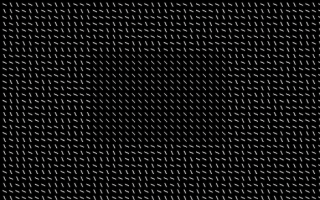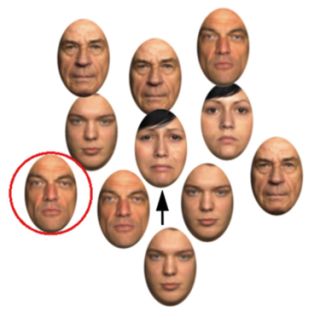Cognition
A Face in the Crowd: The Illusion of Emotional Uniformity
A new study shows we rely on central vision for decoding a crowd's emotions.
Posted June 28, 2023 Reviewed by Ray Parker
Key points
- Peripheral vision is blurry, so we can rely on central vision to fill in the gaps, which can be misleading.
- A previous study showed this "uniformity illusion" in the perception of simple shapes and textures.
- A new study shows that something similar happens when we perceive the main emotion in a crowd of faces.
- The emotion of the central face has an oversized influence on how we perceive the rest of the crowd.
Our visual experience is constructed from a limited sampling of reality. Although our central vision is incredibly rich in detail and color, our peripheral vision is blurry, colorless, and lacking in detail. In some cases, we infer properties about peripheral stimuli based on the information we receive from central vision, even when it's not relevant.
The Uniformity Illusion

In a 2017 study, Marte Otten and colleagues demonstrated this in a striking illusion called the Uniformity Illusion. Participants were asked to observe displays for a prolonged duration. Over time, participants reported that the display began to look uniform, with the objects in the periphery matching the objects in the center of the display. Try it for yourself—if you stare long enough (20 or 30 seconds) at the center of the display, you may notice that the angles of all the lines seem to match with those in the center (even though they actually do not).
The researchers repeated the experiment with lots of different stimuli varying in shape, color, brightness, and motion. In all cases, participants reported the same illusion: over time, the stimuli begin to look uniform.
The fact that our peripheral vision is influenced by central vision makes sense in this type of context. Normally, we move our eyes around to fixate on things that are important (for example, the next word while reading). To perceive the "uniformity illusion," one needs to inhibit the urge to move one's eyes to examine directly what's going on at the periphery of the display, and instead remained fixated in the center. In the absence of any other information, the visual system's best bet is that the content is uniform throughout the visual field. But what happens when we look at more complex visual stimuli, like faces?
Uniformity of Emotional Perception
In a recent study, Feriel Zoghlami and Matteo Toscani from Bournemouth University, U.K., extended the findings of Otten and colleagues by examining what happens when we look at a crowd of faces. They essentially replicated the experiments, but using emotional faces instead of simple shapes.
In their experiment, participants looked at a "crowd of faces" like the one below, and adjusted the expression of a probe face to match the perceived emotion of a target face somewhere in the crowd. In some trials, the target face was centrally fixated (that is, the one marked by an arrow) and in other trials, the target face was a peripheral face that the participant was not looking directly at (for example, the one indicated with a red circle). The experimenters used an eye tracker to record eye movements during the task and used a gaze-contingent display so that participants only saw the crowd of faces when they were fixating on the instructed location on the screen.

The results of their study showed that participants' perceived emotion of the target face was affected by the irrelevant faces in the crowd and that this effect was more pronounced for central faces. In other words, a central (but irrelevant) face had a greater influence on the perceived emotion of a target face than did other peripheral faces.
These findings results are compatible with the notion of ensemble processing of faces (Haberman and Whitney, 2009; see also my previous blog post on the subject). But in the current study, Zoghlami and Toscani emphasize the importance of central vision in resolving the ambiguity of emotional faces. Just as with simple shapes and textures, our visual system relies on central stimuli to fill in the gaps in our peripheral perception.
References
Otten, M., Pinto, Y., Paffen, C. L., Seth, A. K., & Kanai, R. (2017). The uniformity illusion: Central stimuli can determine peripheral perception. Psychological Science, 28(1), 56-68.
Zoghlami, F., & Toscani, M. (2023). Foveal to peripheral extrapolation of facial emotion. Perception, 03010066231172087.
Haberman, J., & Whitney, D. (2009). Seeing the mean: ensemble coding for sets of faces. Journal of Experimental Psychology: Human Perception and Performance, 35(3), 718.


